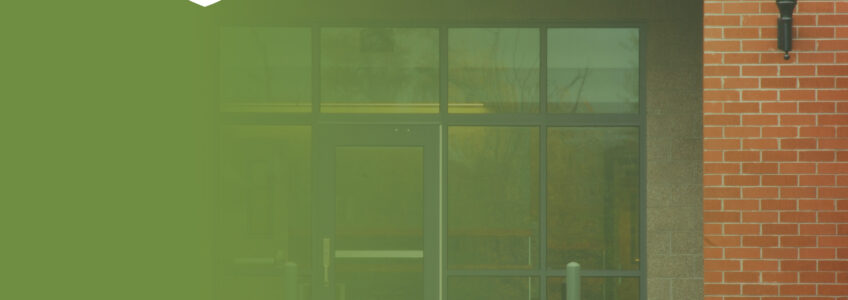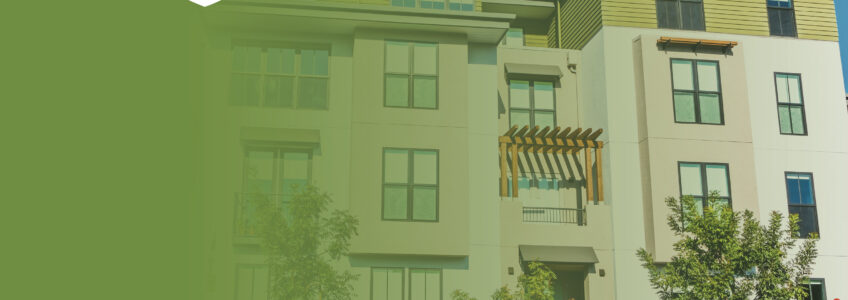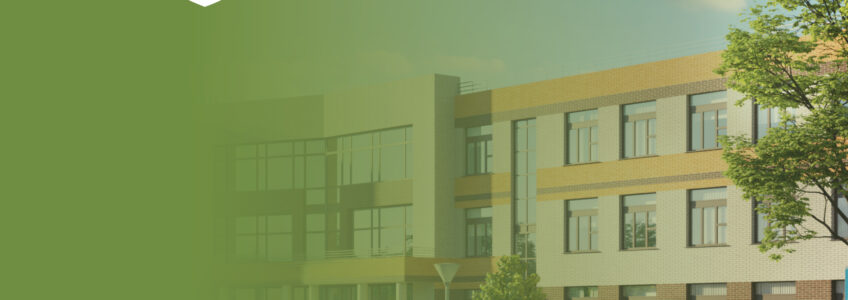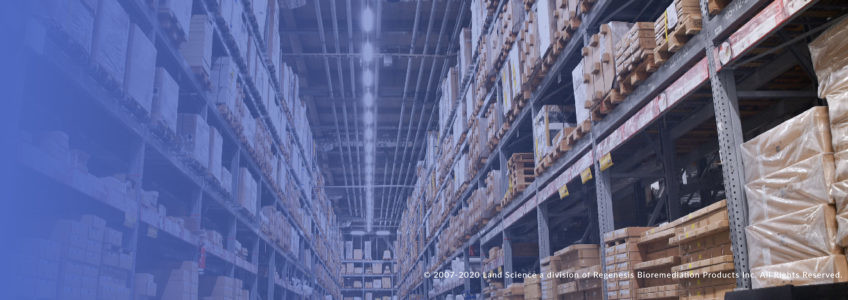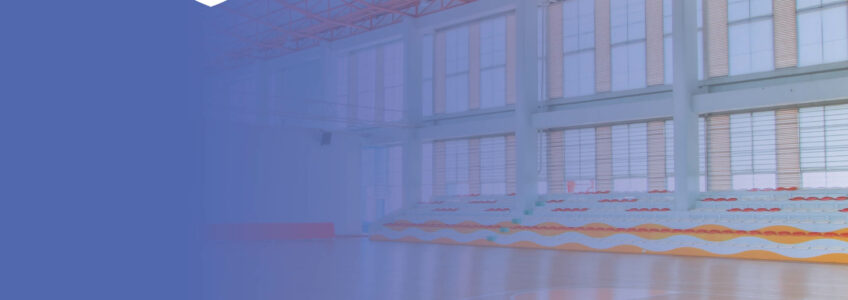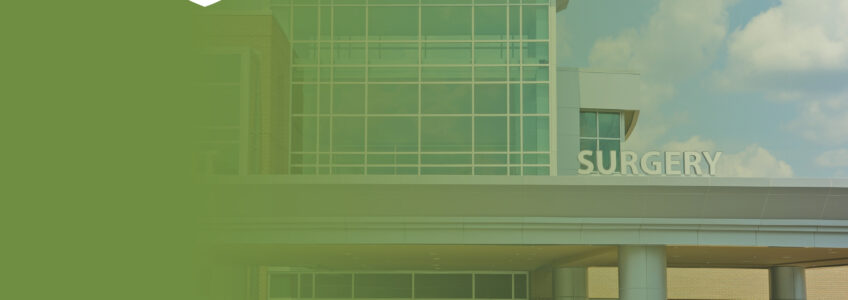Townhome Residents Protected from Exposure to Vapors
Project snapshot highlights:
- Townhome Development in South Carolina
- Quality Assurance Testing Completed
- Installed in Less Than 2 Days Saving Time and Money
A townhome development in Greenville, South Carolina, implemented the MonoShield® vapor barrier and TerraVent™ low-profile venting system to address low-level volatiles organic compounds, keeping future tenants safe from exposure. The environmental consultant required a turnkey installation for the barrier and venting system along with quality assurance/ quality control testing of the system. The consultant also evaluated a single-layer polyolefin sheet system that relies on taped seams and is not installed by a certified applicator or smoke tested. In comparing the approaches and costs of the two options, the MonoShield system was selected based on the time-efficient, certified installation in addition to its proven chemical resistance. The installation was completed across the 6,000 square feet foundation in less than two days at a low cost. The consultant, also a certified Land Science Inspector, provided an added layer of quality assurance and value to the developer by overseeing and documenting the installation process.
TerraShield Installed at San Francisco Police Station Annex
Project snapshot highlights:
- Law Enforcement Staff Protected from Vapors
- First TerraShield Project in the Bay Area
The project site was a shooting range addition to the existing police station in San Francisco, CA and is the first TerraShield® application in the city. The state-of-the-art vapor mitigation system provides the most protective technology for the men and women who serve to protect the city of San Francisco. MTN, Inc., the Land Science certified applicator for this site, was able to leverage their years of experience installing Land Science vapor barrier systems to ensure that the installation went smoothly and in accordance with the manufacturer’s recommendations with little disruption to ongoing police activities. The result is a safe and healthy environment for the SFPD staff to hone their firearm training.
TerraShield – Key Element to a Sustainable Development Solution
Project snapshot highlights:
- Brownfield Redevelopment in California
- 44-Unit Sustainable, Multi-Family Housing Complex
- 11,000 Square Feet Installed
The project site is a 44-unit multi-family housing complex that was a former brownfield with chlorinated solvents detected in the soil gas. The project’s development was funded through the California Climate Investments’ Affordable Housing and Sustainable Communities Program through the Strategic Growth Council and the California Department of Housing and Community Development. The Affordable Housing and Sustainable Communities (AHSC) Program makes it easier for Californians to drive less by making sure housing, jobs, and key destinations are accessible by walking, biking, and transit. The project development team selected TerraShield® due to its superior chemical resistance, ease of installation, and competitive cost. It is the first TerraShield application of its kind in Northern California and was accepted by the AHSC as a cost-efficient solution that provides the highest level of protection for future residents of the development. The cutting-edge vapor barrier system will ensure residents are protected from vapor intrusion long into the future.
State-of-the-Art Barrier System Required for Elementary School
Project snapshot highlights:
- State-of-the-Art Vapor Barrier System Protects New School
- Former Landfill Resulting in Methane Soil Gas
- 25,000 Square Feet Installed
An elementary school needed a vapor mitigation barrier and venting system to address methane gas from this former landfill site. The environmental consultant engaged Land Science to provide an internal review of the available data collected on the property and assist in recommendations on the engineered design. The vapor barrier and venting design was tailored to accommodate the building’s caissons-with-grade-beams foundation. Land Science, the environmental consultant, and the architect worked closely to develop a final venting layout and the ideal vent riser locations. Due to the sensitive nature of the development as an elementary school, the municipality and the environmental consultant desired to incorporate the best in class mitigation technology for the project. The TerraShield vapor barrier and TerraVent low-profile venting system were installed across the 25,000 square feet foundation. The project required union labor and multiple competitive bids. Land Science’s extensive Certified Applicator Network made it easy to accommodate the complex project requirements.
Safety from Chlorinated Solvent Vapors is Ensured for Charlotte, NC Townhome Residents
Project snapshot highlights:
- New Townhome Development Quickly Moves Forward Thanks to Installation Efficiencies
- 22,000 Square Feet Installed
The site is a new townhome development in a growing Charlotte, North Carolina neighborhood. As one of the fastest-growing metropolitan areas in the United States, housing demand is outpacing supply. The demand for housing most often results in a fast moving building environment as developers push construction to meet the need. At this site, chemical spills from nearby industrial activities contained chlorinated solvents that migrated through the subsurface and resulted in low levels of these compounds in the soil gas. The property developers required a preemptive solution that would eliminate the risk of vapor intrusion in residents’ homes, while maintaining construction pace. Ultimately, the developers chose Nitra-Seal® to provide a combination of best-in-class chemical resistance and installation expediency. The nitrile-advanced asphalt latex reduces the installation time to effectively seal numerous slab penetrations for this 22,000 square feet townhome development, allowing for on-time completion of the townhome community.
Nitra-Seal Applied at Major Office Complex in Midtown Atlanta
Project snapshot highlights:
- Land Science Provided Project Oversight to Ensure All Specifications Were Met
- 2,000,000 Square Foot Campus
The site is earmarked for approximately two million square feet of office space in Midtown Atlanta and consists of two office towers, twelve covered parking levels, and more than 250,000 square feet of multi-use space. The office campus is the future home of a global transportation company who chose this site for its prime location in an up-and-coming area of Atlanta. In considering long-term liability, the forward-thinking property developer and environmental consultant opted for the Nitra-Seal® vapor barrier system to provide reliable, lasting protection against the intrusion of soil gas vapors containing chlorinated solvent and petroleum hydrocarbons. Given the project’s scope, the team requested Land Science’s oversight to report to the general contractor and property owner on the vapor mitigation system’s installation status while ensuring compliance with Land Science specifications. The installation was successful, meeting manufacturer specifications and on-time completion.
Nitra-Seal Protects Indoor Air Quality for Customers and Tenants at a New Retail Center
Project snapshot highlights:
- Nitra-Seal Protects Indoor Air Quality at Retail Center
- Petroleum Hydrocarbons Abated
- 10,000 Square Feet Installed
The project is a commercial retail center in St. Louis, and part of a larger, decade-long redevelopment project. A nearby, historical fuel spill resulted in petroleum hydrocarbon compounds, including benzene, ethylbenzene, and naphthalene, being detected at concentrations exceeding Missouri’s Risk-Based Corrective Action indoor air screening levels. Consequently, the soil gas was considered a vapor intrusion risk to future building occupants and required a vapor mitigation solution. The engineering consultant selected Nitra-Seal® with a TerraVent™ low-profile, passive venting system to address the risk. Selection factors included its ease of installation and superior chemical resistance offered by Nitra-Seal’s spray-applied, nitrile-advanced asphalt latex. Land Science teamed with the engineering consultant in the design process by developing the venting layout and vapor barrier system’s specifications. Additionally, the environmental consultant, a Land Science Certified Inspector, provided oversight on the installation and documented compliance with the project specifications per the development team’s request.
New Jersey Warehouse Protected from Former Industrial Contaminants
Project snapshot highlights:
- Former Industrial Property Redeveloped in New Jersey
- Substantial Cost and Time Savings Realized
- 150,000 Square Feet Installed
The building occupies a former industrial property in northern New Jersey, which has been developed into a large, nearly four-acre warehouse. Various contaminants, including chlorinated solvents and petroleum hydrocarbons, were historically used on-site, resulting in the presence of soil gas vapors and the potential for vapor intrusion. To mitigate this risk, the MonoShield® vapor barrier and a passive venting system were installed. The original vapor mitigation design called for a traditional HDPE liner with a geotextile fabric to be installed below the liner. Land Science was able to save significant time and money by suggesting the use of the MonoShield vapor barrier. The MonoShield system uses a spray-applied nitrile-advanced asphalt latex to seal the vapor barrier seams and penetrations, thus saving substantial time over traditional welding of HDPE liners. In addition, the MonoShield vapor barrier includes a geotextile fabric thermally bonded to the underside of the barrier, eliminating the need for the additional geotextile layer. This site-specific design not only saved on the overall system cost, but it also sped up of the vapor barrier installation time which ensured the project was completed on time, meeting the growing demand for warehouse space in northern New Jersey.
MonoShield Provides a Safe Environment for Young Athletes
Project snapshot highlights:
- Newly Developed Indoor Sports Training Facility
- Constructed Near a Former Landfill
- 20,000 Square Feet Installed
A new indoor sports training facility in Michigan includes two open-field playing areas, encompassing approximately 20,000 square feet. The facility was constructed near a former landfill, and a combination of soil gases act as potential vapor intrusion sources, including methane, petroleum hydrocarbons, and chlorinated solvents. The building’s foundation consists of caissons with grade beams in the areas spanning the waste material and trench footings along the edges. The engineering consultant, SME, compared the soil gas results to the listed screening levels to support the design of the vapor mitigation system. The project development team selected MonoShield® over a 20-mil, taped-seam vapor barrier due to its superior chemical resistance and quality control testing by a Land Science certified applicator, making the application more efficient and providing a high degree of confidence to the project stakeholders.
Medical Center Construction Proceeds Following Elimination of Vapor Threat
Project snapshot highlights:
- TerraShield Protects New Medical Facility
- Threat From PHC Vapors Eliminated
- 22,000 Square Feet Installed
The project is a new medical facility in western Michigan built on a site impacted with petroleum hydrocarbons in soil gas, posing a vapor intrusion risk. Multiple vapor mitigation systems were evaluated, and TerraShield® was selected by the project development team based on its enhanced chemical resistance versus other composite spray applied vapor barriers. The reinforced metalized film base layer, in combination with the nitrile advanced asphalt latex makes the TerraShield vapor barrier the new gold standard for vapor intrusion barrier performance. For quality control, our certified applicator conducted smoke testing underneath the barrier to confirm a vapor-tight system. The Land Science Certified Applicator completed the project successfully, enabling construction to move forward.



